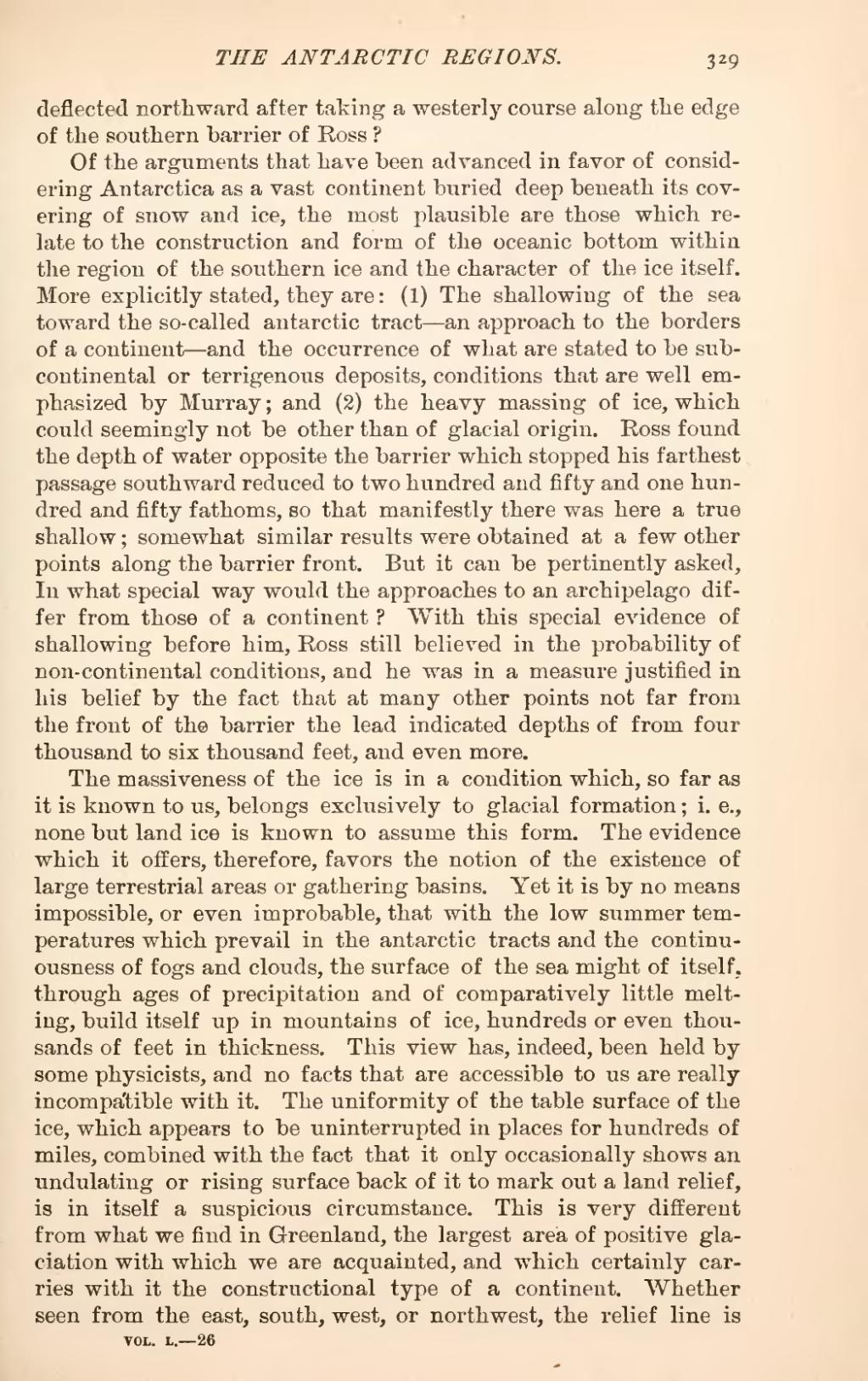deflected northward after taking a westerly course along the edge of the southern barrier of Ross?
Of the arguments that have been advanced in favor of considering Antarctica as a vast continent buried deep beneath its covering of snow and ice, the most plausible are those which relate to the construction and form of the oceanic bottom within the region of the southern ice and the character of the ice itself. More explicitly stated, they are: (1) The shallowing of the sea toward the so-called antarctic tract—an approach to the borders of a continent—and the occurrence of what are stated to be subcontinental or terrigenous deposits, conditions that are well emphasized by Murray; and (2) the heavy massing of ice, which could seemingly not be other than of glacial origin. Ross found the depth of water opposite the barrier which stopped his farthest passage southward reduced to two hundred and fifty and one hundred and fifty fathoms, so that manifestly there was here a true shallow; somewhat similar results were obtained at a few other points along the barrier front. But it can be pertinently asked. In what special way would the approaches to an archipelago differ from those of a continent? With this special evidence of shallowing before him, Ross still believed in the probability of non-continental conditions, and he was in a measure justified in his belief by the fact that at many other points not far from the front of the barrier the lead indicated depths of from four thousand to six thousand feet, and even more.
The massiveness of the ice is in a condition which, so far as it is known to us, belongs exclusively to glacial formation; i. e., none but land ice is known to assume this form. The evidence which it offers, therefore, favors the notion of the existence of large terrestrial areas or gathering basins. Yet it is by no means impossible, or even improbable, that with the low summer temperatures which prevail in the antarctic tracts and the continuousness of fogs and clouds, the surface of the sea might of itself, through ages of precipitation and of comparatively little melting, build itself up in mountains of ice, hundreds or even thousands of feet in thickness. This view has, indeed, been held by some physicists, and no facts that are accessible to us are really incompatible with it. The uniformity of the table surface of the ice, which appears to be uninterrupted in places for hundreds of miles, combined with the fact that it only occasionally shows an undulating or rising surface back of it to mark out a land relief, is in itself a suspicious circumstance. This is very different from what we find in Greenland, the largest area of positive glaciation with which we are acquainted, and which certainly carries with it the constructional type of a continent. Whether seen from the east, south, west, or northwest, the relief line is
